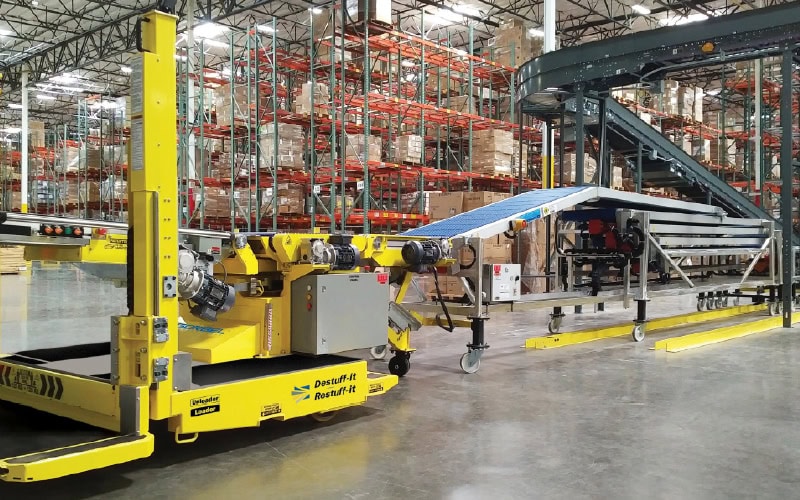How Portable Ergonomic Conveyors Help Improve Loading Dock Operations

Warehouse, DC, and 3PL operators are turning to portable ergonomic conveyors to improve worker safety and productivity, among other benefits.
Using a portable ergonomic conveyor makes dock operations safer and more productive. At many docks, unloading trailers and containers with floor-loaded products is a productivity bottleneck and a potential source of worker injuries. Addressing these concerns, a portable conveyor places a platform and a conveyor at the box wall. Workers don’t have to lift the box. Instead, they can slide it onto the conveyor without lifting, twisting, or carrying it.
Operators experience more throughput and greater handling capacity with less employee fatigue and muscle strain because of the optimal positioning at the box wall.
INCREASING EMPLOYEE ENGAGEMENT
With labor shortages and rising wages, making work more manageable in the warehouse can help solve these problems. It’s tough to find workers to accommodate seasonal peaks or even an increase in daily volumes.
Reducing the labor and potential for injury could lead workers to stay at a job that’s not as physically demanding without a higher pay scale.
When peak volumes hit, it’s easier to handle using existing labor with the help of the conveyors. Two-way portable ergonomic conveyors not only contribute to a better work environment but also ensure higher cube utilization. Following safety rules like not lifting over your head or using a step stool, a loader can only lift product to a certain level, usually much lower than the trailer roof.
With the ergonomic assist, loaders can get closer to 100% trailer utilization, ultimately reducing the number of truckloads to ship out goods. It’s advantageous in warehouse-to-warehouse moves when both origin and destination likely have a portable ergonomic conveyor on site.
Palletized products are usually the better option for retail store deliveries that may only use a pallet jack to unload the truck.
Decreasing trailer turn times can reduce or eliminate demurrage charges, standby charges, and drop trailer charges.
LEVERAGING AUTOMATION
While automated unloading technology is progressing, it’s not yet ready for full production applications. Most automated systems can handle specific loads, like shoe boxes that have uniform dimensions. Mishaps like a dropped box need to be remedied with human intervention. At this point, most systems are slow, so they don’t meet productivity expectations.
Portable ergonomic conveyors drive the time, cost, and risk out of loading and unloading tractor trailers and containers by bringing the person to the work.
Key Benefits of Ergonomic Conveyors

Warehouse, DC, and 3PL operators are turning to portable ergonomic conveyors to improve worker safety and productivity, among other benefits:
- Improving Health and Safety. According to OSHA, 25% of all reported warehouse injuries occur on loading docks. Workers may grab heavy boxes over their heads, straining to reach a load high on the box wall. Step stools are a common workaround but present risks as well. As an unloading team works a trailer, they may get fatigued and take shortcuts, like knocking boxes over and picking them up off the floor. Those boxes could land on an employee or create tripping hazards.
- Boosting Productivity. Portable ergonomic conveyors can transform warehouse operations. In a fully manual operation, it may take an 8-hour shift to unload a trailer. Depending on the product, an ergonomic conveyor could reduce unloading time by 50% with an optimally sized team at each dock door.
- Optimizing Dock Operations. With a portable ergonomic conveyor, a dock door may handle four trucks per shift instead of one. The warehouse needs fewer dock teams and doors. A warehouse with 40 doors could be downsized to 10 doors, with 10 teams instead of 40. Of course, productivity varies by product type and dimensions. Space in the warehouse can be freed up for additional racking or other improvements.
